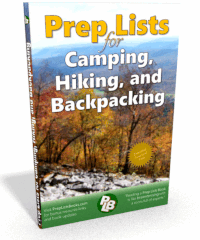A section in Chapter 1 of the book:
Prep Lists for Camping, Hiking, and Backpacking
Be careful not to confuse “fire starters” with your initial spark, flame, or hot coal. Many commercial or homemade “fire starters” assume that you already have a spark or heat source to light them.
Preparations
The following are probably the most common tools to ignite a fire.
Lighters
- Disposable butane lighters are a reliable source of flame that will light most any dry tinder
- Even when the fuel runs out, the flint still creates sparks for you to light suitable tinder or liquid fuel (pry off windscreen)
- Not all lighters are alike—cheap lighters are prone to breaking, leaking, or overheating; rely on quality brands
- For a lighter that requires no fuel, consider an arc lighter like the TekFire Rechargeable USB Lighter
- Pocket torch lighters are more reliable in harsh conditions
- For the ultimate in fire starting lighters, consider the Zippo Emergency Fire Starter kit
-
Caution: Issues may arise at high altitude or in extreme cold
Buy It Online: Various Lighters for Starting Fires
Matches
- Inexpensive, lightweight, and burn hot
- Must be kept dry to be effective
- Waterproof and windproof versions are available
Sparks
- Fire Steel or Flint & Steel (Flint sticks are just oversized versions of the little flints found in every cigarette lighter.)
- Ferrocerium Rods
- Stable, long-lasting, multiple use, and works even when wet
- Requires suitable tinder to capture the spark and may need skill to nurse it to flame
- Intense friction between flint rock and high-carbon steel shaves off tiny filings (sparks) that burn at very high temperatures
} } } This information is in the book “Prep Lists for Camping, Hiking, and Backpacking.” { { {


You must log in to post a comment. Log in now.